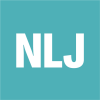Orchestration in Work Environment Policy Programs
DOI:
https://doi.org/10.18291/njwls.v7i3.97092Keywords:
Health, Working Environment and Wellbeing, Labor market institutions & social partnersAbstract
In spite of many years’ efforts, it is difficult to prove substantial improvements of the work environment and policymakers are continuously searching for new efficient strategies. This paper examines the concept of orchestration of work environment programs, based on an empirical analysis of recent Danish policy. Orchestration is a strategy where different stakeholders and activities are integrated into a unified program aimed at a specific target group. The analysis includes three policy cases, supplemented with two company case studies. The research shows a move toward a more governance type of regulation, which is not only emerging in network but also includes more explicitly orchestrated policy programs. The stakeholders participate in the network with different interests and the orchestration of work environment policies is therefore built on a platform of regulation, as it is especially important for employers and unions as key stakeholders in order to accept these shared policies.Downloads
Published
How to Cite
Issue
Section
License
The Copyright Holder of this Journal is the authors and the Journal. Normally the journal use the CC-BY NC-ND 4.0 licence.
Exceptions to the license terms may be granted
If you want to use content in the Journal in another way then described by this license, you must contact the licensor and ask for permission. Contact Annica Asp at annica.asp@kau.se. Exceptions are always given for specific purposes and specific content only.
Sherpa/Romeo
The Journal is listed as a blue journal in Sherpa/Romeo, meaning that the author can archive post-print ((ie final draft post-refereeing) and author can archive publisher's version/PDF.
Copyright of others
Authors are responsible for obtaining permission from copyright holders for reproducing any illustrations, tables, figures or lengthy quotations previously published elsewhere.
Archives policy
All published material is archived at the Danish Royal Library in conformity with the Danish rules of legal deposit.
Plagiarism screening
We do not screen articles for plagiarism. It is the responsibility of the authors to make sure they do not plagiate.

 Professor, Sustainable Production, Department of Materials and Production, mail:
Professor, Sustainable Production, Department of Materials and Production, mail:  Head of Research
Head of Research
 Research Associate, Menzies Centre for Health Policy
Research Associate, Menzies Centre for Health Policy
 Post-doctoral researcher, Sustainable Production, Department of Materials and Production
Post-doctoral researcher, Sustainable Production, Department of Materials and Production


